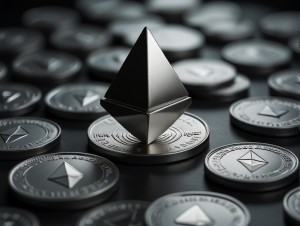Ethereum, the second-largest cryptocurrency by market capitalization, is currently navigating through choppy waters. The anticipated Dencun upgrade, which was aimed at enhancing the security of the Ethereum network, has been delayed, causing a stir in the crypto community. This decision was confirmed by Ethereum client developers on October 26, stating that the upgrade would not be rolled out before the close of 2023.
Ethereum clients at odds over Dencun implementation
The core reason for this delay? A clear rift between the developers responsible for the consensus layer and those handling the execution layer. The two groups, fundamental to Ethereum’s operation, have displayed a difference in readiness and perspective about the imminent upgrade.
In September, the Ethereum developer community launched the Holešky testnet, albeit later than initially scheduled. This delay already indicated possible challenges ahead, with many insiders expressing skepticism about the feasibility of thoroughly vetting the upgrade before December.
In a recent All Core Developers call, these suspicions were affirmed when the pseudonymous Prysm developer, Potuz, expressed his apprehensions. He candidly pointed out the challenges faced in the ten developer networks (devnets) set up to test the Dencun upgrade. “Not a single one of them has gone smoothly,” he declared.
The differing readiness levels: Execution vs. consensus teams
While the consensus layer teams highlighted multiple issues plaguing the test networks, the execution layer teams presented a contrasting picture. The execution layer client teams have reported a state of readiness for upcoming testnets.
This difference in perspectives was evident when Lightclient, a developer for the Geth project, stated, “We are in a pretty good place, a lot of things are also on Master now.” The ‘Master’ he referred to is the primary digital workspace used by the Go Ethereum project. This is where all vital code, files, and revision histories are maintained.
However, these sentiments weren’t universally shared. As the launch for Devnet 10 was initiated, plans were made for the execution clients to undergo a broader testing phase on the Goerli testnet. But Prysm’s Potuz wasn’t on board. He voiced his concerns, stating, “I’m not comfortable at all having a full client fork on Goerli.” He went on to cite significant changes still being implemented in the Prysm branch, which is essential given it powers almost half of the consensus layer clients.
The importance of the Dencun upgrade: Enhancing Ethereum’s security
But why is the Dencun upgrade so crucial for Ethereum? At its core, this upgrade aims to bolster the security mechanisms for Ethereum’s scaling solution named Proto-Danksharding. It employs sophisticated cryptography methodologies to achieve this.
Central to the Dencun upgrade is the KZG Ceremony. In this unique process, multiple participants come together, each contributing a secret. These secrets undergo computations to amalgamate with prior inputs, resulting in the generation of a “structured reference string” (SRS). The SRS is a cornerstone for the KZG Commitments cryptographic system, which is pivotal to Proto-Danksharding’s functionality.
The collaboration’s outcome, involving this ceremony, gets integrated into the Dencun upgrade. The system’s robustness is ensured as long as there is at least one genuine participant in the KZG Ceremony. After an extended period of collecting inputs, a staggering 141,416 participants ensured that the upgrade’s security level was unparalleled.
Amid these developments, Ethereum’s scaling project, Scroll, has been showing promise. Recent reports highlighted its achievements, noting that it has successfully surpassed $15 million in DeFi TVL.
Conclusion
While the delay of the Dencun hardfork may cause immediate concerns, the overarching commitment to ensuring Ethereum’s security and scalability remains evident. As the crypto community awaits the next steps, the emphasis on thorough testing and consensus signifies a mature, long-term vision for the Ethereum network.





